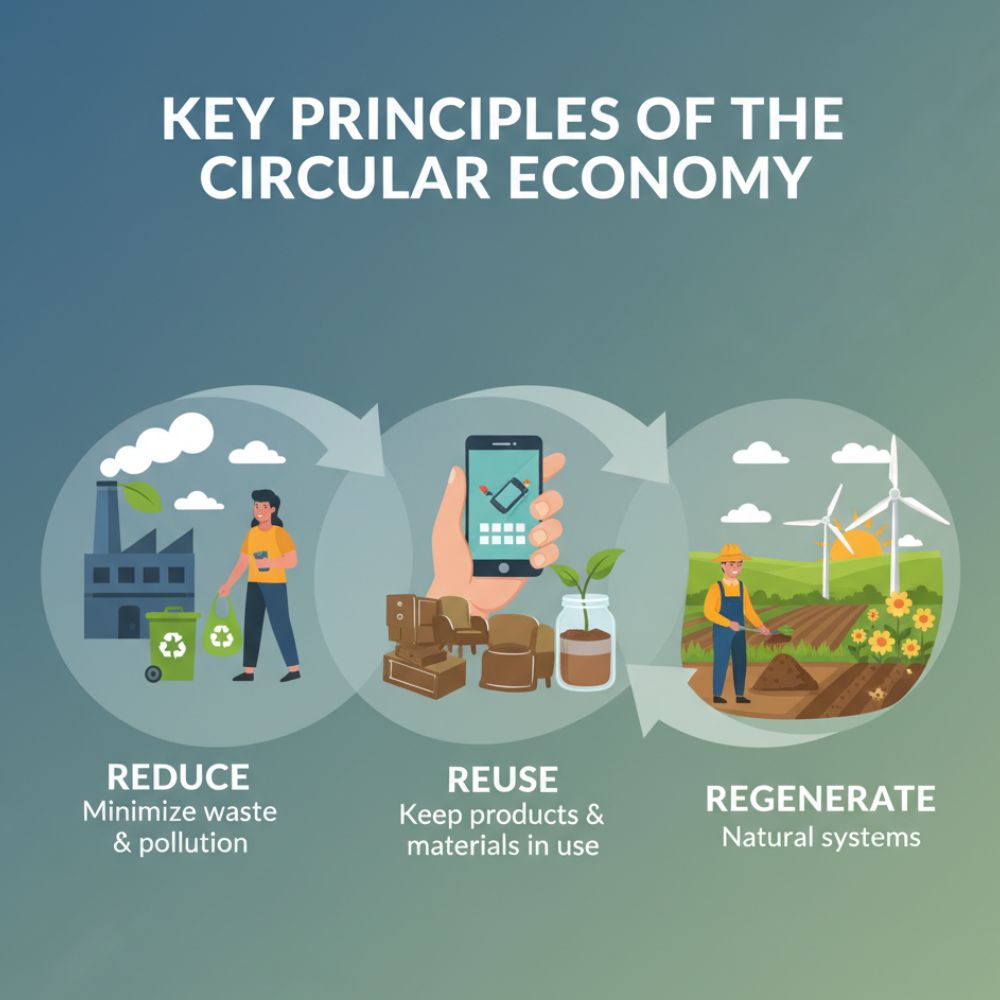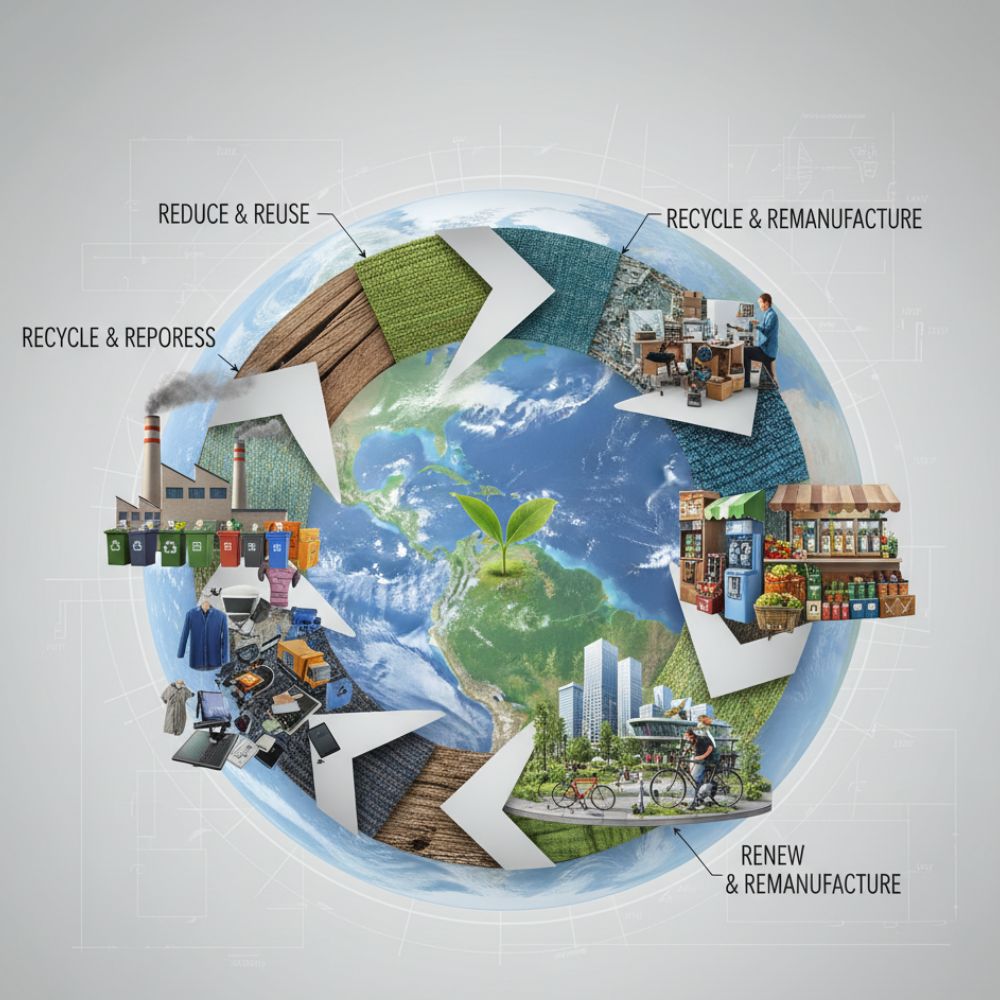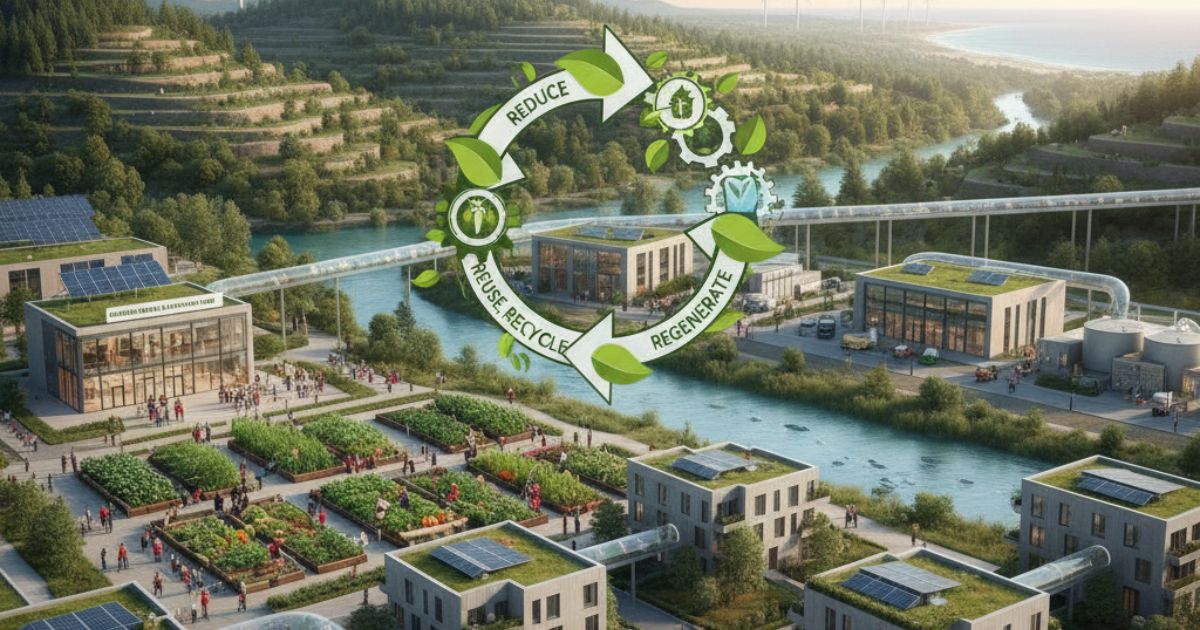Community development in the 21st century is increasingly intertwined with sustainability. As traditional linear economic models lead to resource depletion and environmental strain, forward-thinking communities are embracing the principles of the circular economy to foster resilience and long-term sustainability. By reimagining how resources are sourced, used, and recovered, circular economy strategies can transform waste streams into opportunities. This holistic approach not only benefits the environment but also fosters social cohesion, encourages local entrepreneurship, and creates new opportunities for economic development. In this blog post, we will explore the fundamentals of the circular economy, outline actionable strategies for community implementation, and highlight best practices from around the world that can serve as inspiration for planners, civic leaders, and engaged residents.
Understanding the Circular Economy in Community Development
At its core, the circular economy is a regenerative system designed to minimize waste and make the most of existing resources. Unlike the take-make-dispose mindset of a linear economy, the circular model emphasizes closed-loop cycles in which materials are reused, remanufactured, or recycled back into the production stream. For communities, adopting circular economy principles means redesigning local supply chains, building infrastructure for material recovery, and fostering a culture of repair and reuse. This paradigm shift can help towns and cities reduce landfill pressure, lower carbon emissions, and generate new economic opportunities for residents and businesses alike.
Key Principles of the Circular Economy

The circular economy is built on three foundational principles: designing out waste and pollution, keeping products and materials in use, and regenerating natural systems. Designing out waste involves selecting materials and production methods that produce minimal byproducts. Keeping products in use extends their life through repair, refurbishment, and sharing platforms. Regenerating natural systems focuses on restoring ecosystem health by replenishing soil nutrients and preserving biodiversity. By incorporating these principles into community development plans, local governments can develop strategies that strike a balance between economic growth and environmental stewardship.
Strategies to Implement Circular Economy at the Community Level
Implementing circular economy practices requires a multi-pronged approach. First, conduct a resource flow analysis to identify high-volume waste streams and key local industries. Second, engage stakeholders—from municipal departments to small businesses and resident groups—to co-design solutions that fit the community’s unique context. Third, pilot targeted projects that showcase the benefits of closed-loop processes, such as community repair cafés or neighborhood composting hubs. Fourth, establish incentives, like tax breaks or grants, to encourage businesses to adopt circular design practices. Finally, build partnerships with research institutions, NGOs, and neighboring municipalities to share knowledge, pool resources, and scale successful models regionally.
Mapping Community Assets and Waste Streams
A critical first step in any circular economy initiative is creating an accurate map of community assets and waste streams. This involves cataloging local industries, material inputs, byproducts, and end-of-life flows. For example, a region with a thriving furniture manufacturing sector might see large volumes of sawdust and wood offcuts. By identifying potential end users—such as biomass energy plants or artisanal workshops—these byproducts can be diverted from landfills and repurposed in a productive manner. Mapping in this way uncovers “urban mines” of secondary resources and lays the groundwork for efficient material exchanges between businesses and civic programs.
Fostering Public-Private Partnerships
Public-private partnerships (PPPs) are essential for scaling circular economy solutions. Municipalities can offer incentives, such as low-interest loans or streamlined permitting processes, to businesses that integrate recycled materials into their manufacturing processes. In turn, private enterprises can invest in shared infrastructure—such as material recovery facilities or centralized repair centers—that benefit multiple stakeholders. By aligning economic development goals with sustainability objectives, PPPs help redistribute risk and leverage expertise across sectors. This collaborative approach accelerates the adoption of circular practices, spreading costs and benefits equitably throughout the community.
Launching Pilot Projects to Demonstrate Impact
Pilot projects serve as visible proof points that circular economy strategies can be successfully implemented at scale. For instance, launching a community bike-share program built on refurbished parts reduces transportation emissions and creates local jobs in repair and maintenance. Similarly, establishing a neighborhood textile recycling cooperative can divert clothing waste while supporting small-business workshops that upcycle fabrics into new products. These pilots not only test technical feasibility but also engage residents directly, building momentum and public buy-in for broader community initiatives.
Engaging Residents Through Education and Outreach
Sustainable behavior change hinges on education and outreach. Hosting workshops on zero-waste living, distributing informational guides on home composting, or organizing material exchange events can empower residents to participate actively in circular initiatives. Schools, libraries, and community centers serve as ideal venues for hands-on demonstrations and interactive seminars. By cultivating a sense of shared responsibility, communities can turn individuals into ambassadors of circular practices, driving grassroots adoption that complements top-down policies.
Measuring Impact and Iterating for Continuous Improvement

Rigorous monitoring and evaluation are crucial for refining circular economy interventions. Key performance indicators (KPIs) may include waste diversion rates, greenhouse gas emission reductions, the number of new jobs created in the circular sector, and citizen engagement metrics. Regular reporting fosters transparency and accountability, while data-driven insights enable the identification of bottlenecks and opportunities for scaling successful pilots. Iterative feedback loops—where lessons learned inform policy adjustments and program enhancements—ensure that community strategies evolve to maximize environmental, social, and economic benefits over time.
Case Study: A Small Town’s Zero-Waste Journey
Consider the example of Greenfield, a town of 25,000 residents that launched a circular economy roadmap five years ago. By converting its former landfill site into a materials recovery park, Greenfield diverted 70% of household waste from landfills within three years. Local startups now manufacture building materials made from recycled content, and a thriving repair café network fosters community ties across generations. Greenfield’s success demonstrates how targeted investments, robust stakeholder collaboration, and transparent impact reporting can transform a small community into a leader in the circular economy—and inspire neighboring regions to follow suit.
Looking Ahead: Scaling Circular Models Regionally
While community-level pilots are the foundation, regional collaboration unlocks exponential impact. Neighboring municipalities can pool resources to build centralized recycling hubs, launch joint procurement programs for recycled materials, and share best practices through intercity networks. Regional alignment also attracts larger-scale investments and can influence state or national policy frameworks to support the development of a circular economy. By thinking beyond municipal borders, communities can amplify their collective voice and drive systemic change at higher levels of governance.
Conclusion: Building Resilient, Regenerative Communities
Embracing the circular economy offers a powerful pathway for communities to reconcile economic development with environmental responsibility. By mapping local assets, forging public-private partnerships, piloting innovative projects, and engaging residents through education and community-building activities, communities can close resource loops and build more resilient, regenerative systems. As the global push for sustainability intensifies, municipalities that adopt circular strategies today will lead the way in shaping tomorrow’s prosperous, inclusive, and eco-friendly economies.





